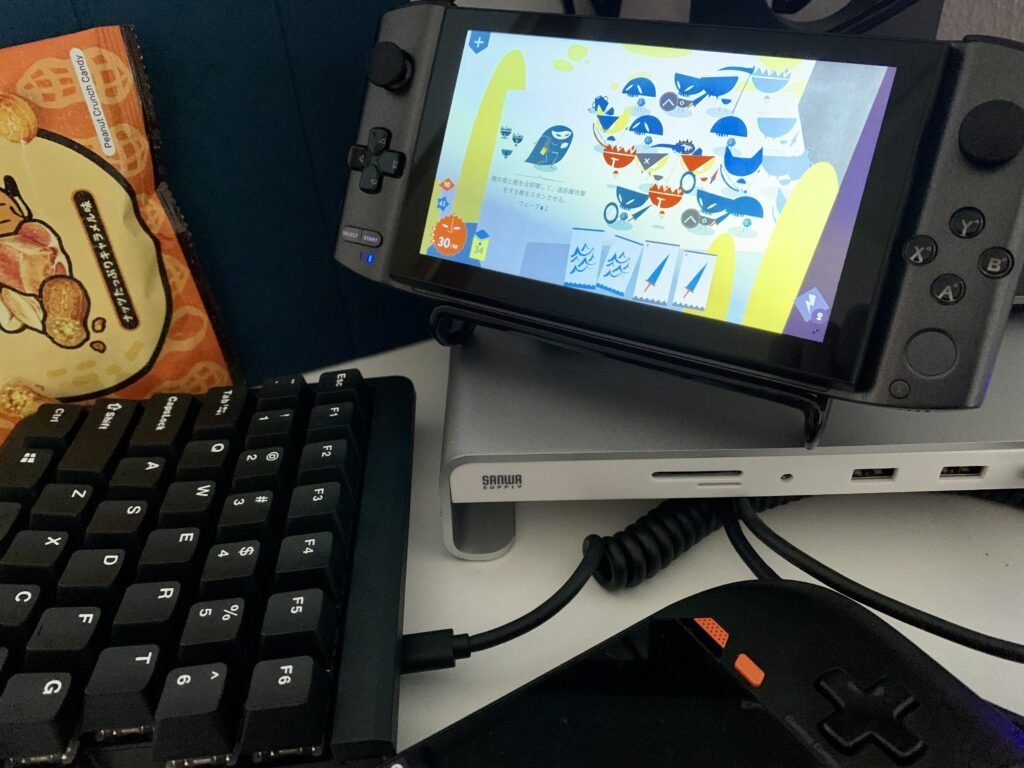Hey there! I'm Yoshinori Ono, CEO at Lasengle.
Welcome to my blog and thanks for dropping by!
Call me biased, but I work at an awesome company. Which is why I want to tell you about some of the amazing job opportunities we have right now.
Currently, we're looking for talented people to join the Design Studio, and here's the ads written by our design studio lead.
■ Information Treasure-Hunter (UI Artist)
We're on the lookout for someone who can hunt out treasure troves of information and collaborate with art, planning, and programming teams. An artist who is an expert in UI and can optimize designs from an information architecture perspective. Sound like you? Get in touch!

UI design is such an important and fascinating field, right? You need to understand the behavior and psychology of the user, and factor in things like age. Take font size. A font that's readable for someone in their 20s might be too small for someone in their 50s.
Being curious about people is probably one of the most important skills you need in gaming, whether you're in development, sales, advertising, PR or customer support. You need to be interested in what makes them tick, what they want. Yeah, you need to study games as well (which is like breathing when you're in a game company so pretty easy to do), but you also have to study and understand the people who are playing them.
If that's news to you and you're thinking any of the following:
"Whaaat? And you're telling me this now?? If I'd known that I'd have studied more when I was a kid!"
"I knew I should've paid more attention to my teacher...who knew it'd come in handy for game design??"
"Finally! All that useless info I crammed for tests now has a purpose!"
Then don't worry, you're not alone. We've all been there (and yep, that includes me!).
The thing with making games is it never gets dull, no matter how much you do it. The more you create, the more you learn and the more questions you have. And the more you learn, the more you realize how little you know--and that just makes you want to create more.
And the best game, the one that I'll keep playing over and over, is the game of making games. I'll never get tired of this!
So, if you feel the same, and your heart is screaming 'Let me make games already!', or if anything in our job listing sparks even a little interest, then why not give Lasengle a go.
Visit here to find out more about our flexible working style, here for Engineering roles and here for Design Studio and Marketing Planning roles.
Look forward to reading your applications!
Moving on, my featured game for blog #14, Iris and the Giant.

Iris and the Giant is a deck-building game with RPG and roguelike elements.
The main character is Iris, a little girl who is being bullied by her peers. No matter what they say, Iris keeps her mouth shut, never saying a word back. Her dad tries to find out why she won't speak up, but Iris won't tell him and just keeps crying every morning. Not knowing how to help, her dad can do nothing but worry.
Then one day, Iris climbs up to the high diving board. Standing at the edge, she hears the cruel laughter of the other kids below. Her eyes fill with tears and then, she falls, head down toward the pool.
This is where the game kicks in, taking the player on an adventure through Iris's memories and hidden emotions.
Iris and the Giant does have roguelike elements but it's essentially a deck-building RPG. Cards, which represent your choices, are single-use and enemies can be defeated in one hit. The route from the start to the final boss is mostly fixed (with the odd sidetrack here and there).
It's a fairly simple game, but the chess-style puzzle aspect of the battles is a nice addition that gives it an edge over other similar games. In the battles, each enemy demon has a different characteristic, and like pieces in a chess game, the enemies are positioned in formation. There's synergies between enemies too, with long-range attack enemies positioned behind those with a powerful defense mechanism.
Before making any decision, you need to plan a couple of moves ahead based on what's in your hand, so it really is like a chess game. And the more I played, the more I realized that a well-balanced deck, that could adapt to most situations, was more powerful than a specialized one.
And I'm pretty sure that this was intentional, because it ties in so well with the story's theme.
Iris and the Giant is a journey through the emotions and memories of Iris. The enemies you fight are demons born from the tears of the giant--the final boss of the game. In other words, you're fighting Iris's own, personal demons.
At the end of the game, you battle with demons shaped like mouths, who attack you with cruel words. It's as if Iris is confronting the things she's been told in the real world. The Giant keeps crying, producing more and more demons who make her feel like it's all her fault.
To beat these enemies, you need a well-balanced deck, you can't rely on just one ability or weapon. Which is kind of deep if you think about it. It's like the gamemakers are saying, to beat this kind of emotional attack, you need a well-balanced mental state. At least, that was my take on it.
But, I know a lot of people don't see it that way, especially when this theme gets pulled into the final battle. Here, you're limited in the cards you can use to attack the Giant. Some people seem to find this frustrating, and I get that. But for me, I was impressed by how the gamemakers tried to bring the game's theme into the battle mechanics, and because of it, the story left a lasting impression on me.
The game developers also used the art style to good effect in beautifully conveying the story and concept. Events and memories that happen in the real world are depicted using a very minimal color palette of transparent watercolors, and rough, sketchy lines. It gives this feeling that we're seeing the world through teary-eyes, lines blurred and colors smudged together.
But for the scenes inside Iris's mind--where most of the game takes place--colors are more varied and vivid. The lines are sharper and there's less graduation between the colors, reminding me a bit of kirigami or paper collages. The designers did a great job using this contrast in the art to tell the story.
When you get to the end of the journey, Iris and the player return to the real world.
Iris and the Giant is a journey through the memories and emotions of a little girl, but as a player, I felt it was a chance to look inside myself and maybe confront a couple of my own demons. You can't say that about many games, but Iris and the Giant is definitely one of them.
That's my take on Iris and the Giant.
Thanks for reading.
The next game is calling my name so gotta go--till next time!
Yoshinori X(Twitter)

